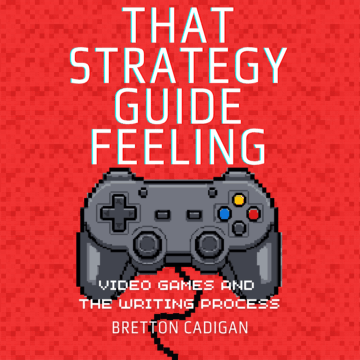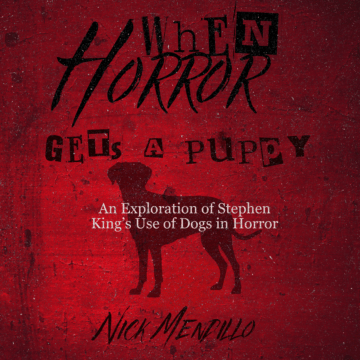
Reading is a healthy and entertaining activity to do. It trains your brain and immerses you into an entirely new world. But every now and then, something small and bothersome grabs your attention over the story itself, like a pet peeve.
—Patrick Edinger
Reading Pet Peeves. The relentless discomforting itch that prods in the back of a reader’s brain and won’t relent. These could occur for any specific reason; it depends on the reader. Below is a list of my personal pet peeves when reading.
Prologues:
To begin, prologues. They aren’t necessary. They slow down a reader’s ability to get into the story. They are often confusing. Use them sparingly. Since prologues are traditionally used as a brief introduction into the story’s world, when they are not used for this purpose, it can be very distracting. The expansion of characters can be developed in the main plot, the information provided by the prologue can be allocated into the first, second, and third chapters. Even then, most worlds are not simply built in a few words or the first few chapters. If the story’s world will be developed more in depth regardless of the prologue, is there really a need for them?
If the story’s world will be developed more in depth regardless of the prologue, is there really a need for them?
Not having a beginning, middle, and end:
Yes, even flash fiction needs these three things. Have you been here before? When there is no beginning to introduce the reader into the world, they will find themselves lost and confused by the fourth or fifth paragraph. A lost reader could evidently ruin the entire experience for themself as a whole. Simply put, please introduce your reader. It will help when you present new ideas—characters, places, events, etc.—later on.
A lack of a middle will pull the story along, however, indefinitely. If there is no defining middle of the story, there will only be an ever extensive introduction that rolls on and on and on and will quickly fall stale.
Lost Narration
Call it a nit-pick, but above all, the person telling the story can not be lost. When it comes down to it, a reader can be lost for some parts of the story. It is what allows us to ask our burning questions and find these answers through the progression of the story. Though, there is one person above all, one voice, that, if they are lost, will ensure a very confused audience; that is the narrator.
Lost narration can take many forms. Sometimes a narrator could instill an idea early on in the story and either forget about it or never expand upon it later on. It’s simply a bit of information left to float in the back of the reader’s mind. Sometimes a narrator accidentally, or intentionally, changes narration styles and/or “voices,” giving way to possible confusion. This can work. It can work very well, when done properly. But when it is done improperly, it can derail the entire narrative.
There are occasions in which lost narration can also take the form of too many ideas at once. Maybe the author likes two ideas equally and wishes to incorporate them both, but fails to establish either one or both, as the main focal point of the story. In which case, the narration then fails to establish a main focal point for the reader to follow; they don’t pave the narrative path.
Trope Flooding
In fiction, especially flash fiction, when everything is quite short, ninety percent of it should, ideally, not consist of tropes. Since pop-fiction and modern fictional stories have a much broader variety of tropes and cliches to choose from, it can seem fairly easy to fall into the trap of trope flooding. Possibly something the narrator enjoys the most, could be a trope that is used quite often. Though, an over-use of this form of storytelling can be overbearing and often gives a lack of intensity due to the predictability of each trope.
Odd Vocabulary Substitutions
When an author explores new vocabulary, it is great and fresh. Though, the reader can tell when it is taken overboard. Once you find your “narrative voice” in your writing style for a specific story, be careful not to stray too far from it. It can be difficult sometimes to write a story and not repeat words ten, twenty, or thirty times over. Sometimes, there’s the need to substitute certain words with others of similar or the same meanings to freshen up the page. However, this can very easily be something that can disrupt the narrative. If a word does not fit the previously set narrative voice or character voice/personality, odds are that it won’t fit very well into the piece. Sometimes words that are longer mean the same thing, but are much more complex and are not always the best substitutions. Words that fit your character, narrative, setting are the ones readers will enjoy and will be what adds some extra flavor to long strings of dialogue or big chunks of paragraphs.
Once you find your “narrative voice” in your writing style for a specific story, be careful not to stray too far from it.
Failing To Fulfill Narrative Promises
Understanding the expectations an author sets up is an important part of any story and sometimes, those promises can be forgotten. To put it clearly, when an author makes a narrative promise, it sets an expectation. When an expectation is set, a reader can become invested in the story. When they become invested, the author’s job is done. They have grasped their reader and now they have an audience along for the ride. They have done their narrative duty… for the most part. There is still the step of pay off. For these story-driven promises to pay off, whether it’s the promise a character makes to themselves, another person, the world, the promise must be fulfilled because readers’ expectations have been set. Depending on the type of character, it could be wishy-washy. Most of the time, side characters are okay to ignore due to their nature. However, when it comes to a main character, these promises being fulfilled are a must.
At the end of the day, stories are complex masses of text that can always be revised, rewritten, and tweaked a lot even after publication. Just as stories can be revised, so can the structural expectations of readers. This list may or may not change in the future depending on what develops. However, for now, this is the full list of my personal reading pet peeves. Though, to refrain, this could definitely be up for revision, seeing as how stories seem to be constantly evolving everyday.


